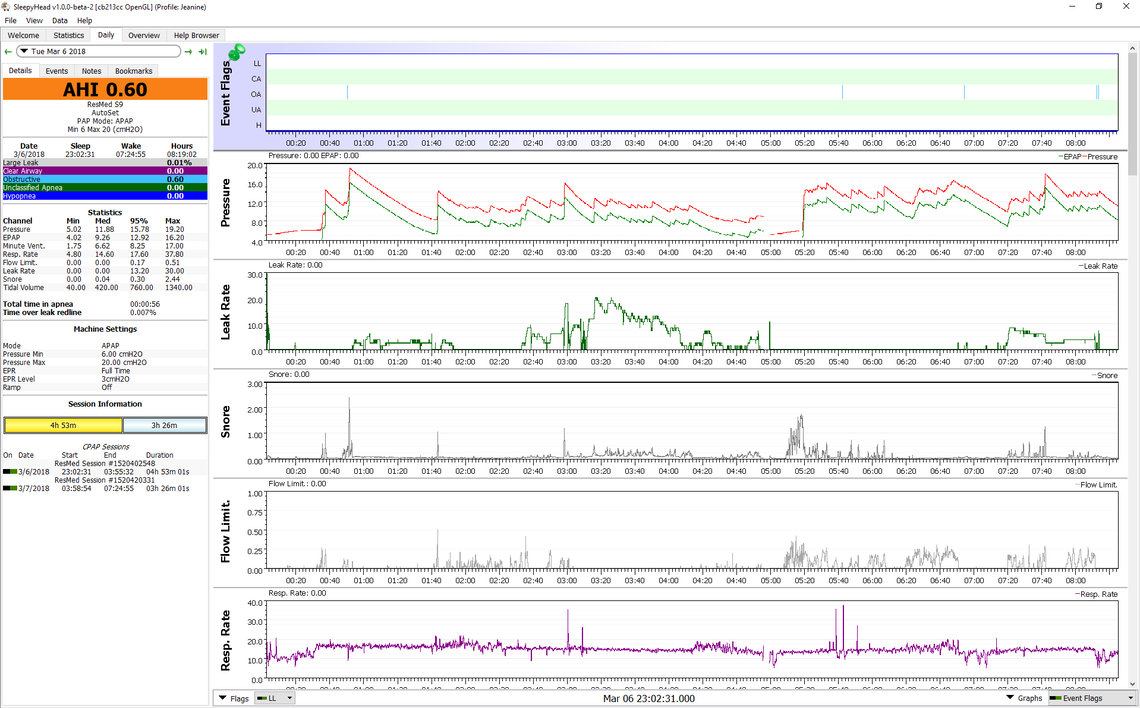Hi, I have a beginner's question about APAP. When the machine detects what it thinks is an apnea or CA, it raises the pressure. Does this pressure ever come down during the same night or does it stay that high until the morning? Sometimes I am half-awake after this happens and I wish it would reduce the pressure.
Ideally, your machine should be PREVENTING obstructive apneas by keeping your airway open. That’s the point of the positive air pressures. And the algorithms are designed to anticipate a collapsing airway and provide increased pressures before you actually experience an apnea. The machine can detect the narrowing of the airway in a hypopnea and impending obstructive event and increase pressures pretty quickly to avoid it. RESMED says their machines can do so within three breaths. So, my questions would be: 1) what machine and settings are you using? 2) is your machine working properly? 3) And what’s your residual AHI?
It kind of depends on your type of machine, but in general yes each obstructive event, hypopnea even, flow limitation, or snore will cause the pressure to increase. Clear airway or CA events should not cause pressure to increase. ResMed machines tend to raise the pressure fairly quickly and then slowly let it decay back down if there are no further events. The DreamStation machines like to bring the pressure down much more quickly. This sounds good, but through the night the pressure can keep going up and down.
See this sleep report with a ResMed machine. The red pressure trace shows the pressure going up and down during the night. You can see how this relates to the OA (obstructive apnea) events in the Events bar, as well as to the Snore, and Flow Limitation.

You mentioned CA events should not cause pressure to increase. So what caused the pressure to increase? I had zero OAs and zero hypopneas. There were no major mask leaks. However, I noticed the flow limit rose around the time the mask pressure picked up. Why would the flow limit rise if I had zero OAs and zero hypopneas?
Thanks I am using a Sleepmate 10 Auto in APAP mode. I turned EPR off, as I found it easier to breathe without it. At the moment, I am only testing the machine in the afternoon for short periods. I have a full mask and a two nasal masks and am still trying to work out which is best.
I have not heard of that name of machine before. However the 10 and EPR makes it sound like a ResMed. EPR stands for Expiratory Pressure Relief. It reduces the pressure when you exhale compared to when you inhale. Most people find it more comfortable when it is turned on.
It is a good idea to try out the machine and masks when you are awake during the day.
Thanks, I should have mentioned that I live in Japan, so this is a Japanese ResMed model. Oscar recognizes it as a "Resmed S9 Sleep Mate 10 Auto in APAP mode". The vendor told me to use the English manual for AirSense 10, as the machine is almost identical to that. I tried EPR at full-time, level 2, but I felt like it was hurrying my breathing, not supporting it.